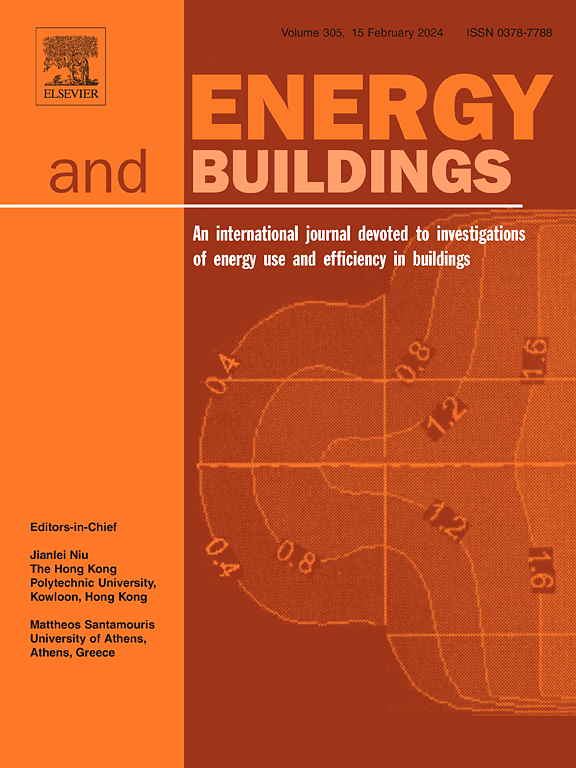Radiative property tests of cooling coatings: A round robin campaign
IF 6.6
2区 工程技术
Q1 CONSTRUCTION & BUILDING TECHNOLOGY
引用次数: 0
Abstract
Radiative cooling is an emerging technology for scenarios requiring space cooling. Radiative property tests of cooling materials are critical for evaluating the cooling performance and energy-saving potential. However, there is a lack of quantitative analysis of the impact of laboratory qualifications on testing results. This study reported a round robin campaign initiated by Chongqing University (China) and participated by seven other academic institutes. In this campaign, six cooling coatings were selected as target materials. The radiative properties — shortwave reflectivity, hemispherical emissivity and atmospheric window emissivity — of the coatings were tested. Based on the testing results, material errors, repeatability errors and reproducibility errors were analyzed. The results revealed that there were certain differences in the radiative properties of the coatings due to their inherent properties. In general, different coatings exhibited varying material errors (0.01%–2.66%), which, although small, were challenging to eliminate. Meanwhile, the radiative property tests showed excellent repeatability, with repeatability errors below 1.00%, confirming that the tests themselves were reliable under proper control. However, significant differences between laboratories (reproducibility errors ranging from 2.03% to 7.40%) suggested that differences in instrument models and operators could lead to significant deviations in the results. This, in turn, severely affected the evaluation accuracy of the coatings’ cooling performance. Therefore, stricter and more detailed protocols are needed to improve the reproducibility for radiative property tests of the coatings.

冷却涂层的辐射性能测试:循环试验
辐射冷却是一种新兴的技术,适用于需要空间冷却的场景。冷却材料的辐射性能测试是评估冷却性能和节能潜力的关键。然而,缺乏对实验室资质对检测结果影响的定量分析。本研究报告了由重庆大学(中国)发起并由其他七个学术机构参与的一轮循环活动。在这次活动中,选择了六种冷却涂层作为目标材料。测试了涂层的短波反射率、半球面发射率和大气窗口发射率。根据测试结果,分析了材料误差、可重复性误差和再现性误差。结果表明,由于涂层的固有特性,其辐射性能存在一定的差异。一般来说,不同的涂层表现出不同的材料误差(0.01%-2.66%),虽然很小,但很难消除。同时,辐射性能测试具有良好的重复性,重复性误差在1.00%以下,证实了在适当控制下,测试本身是可靠的。然而,实验室之间的显著差异(可重复性误差在2.03%至7.40%之间)表明,仪器型号和操作人员的差异可能导致结果出现显著偏差。这反过来又严重影响了涂层冷却性能的评估准确性。因此,需要更严格、更详细的规程来提高涂层辐射性能测试的可重复性。
本文章由计算机程序翻译,如有差异,请以英文原文为准。
求助全文
约1分钟内获得全文
求助全文
来源期刊

Energy and Buildings
工程技术-工程:土木
CiteScore
12.70
自引率
11.90%
发文量
863
审稿时长
38 days
期刊介绍:
An international journal devoted to investigations of energy use and efficiency in buildings
Energy and Buildings is an international journal publishing articles with explicit links to energy use in buildings. The aim is to present new research results, and new proven practice aimed at reducing the energy needs of a building and improving indoor environment quality.
 求助内容:
求助内容: 应助结果提醒方式:
应助结果提醒方式:


